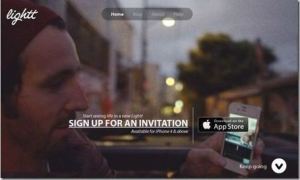OUR DIGITAL STORY:
https://twitter.com/SimoneSimCeleb
For our digital story, we (Caley and I) wanted to explore both machinima and storytelling across multiple digital social media platforms.
Using The Sims3 we created a character (Simone Sim).
SYNOPSIS:
We are aiming to create a digital story which is about a celebrity “Sim” who goes from being a local performer to a popular celebrity. The digital story will cross over three different digital platforms which will include instagram, twitter, YouTube and the Sims 3.
PLATFORMS:
On instagram:
Using Instagram, we are going to make an account for our Sim and upload pictures of herself, concerts, travel destinations, food, and friends. We will do this by taking screenshots of the Sims and then uploading them through the phone. The instagram photos will be linked to the Sim’s twitter account and she will tweet the photos there.
On Twitter:
We are going to create a Twitter account for our Sim where she posts comments about her success, her videos, her concerts, her photos and general thoughts.
NB: the progression of the story will occur in “Sim time”, so 30 minutes in between posts is equivalent to 1 day.
On YouTube:
We are going to post 3 separate short clips (approx 10 seconds) which we will have made by filming the sims game and editing the clips together. The link to these YouTube videos will be tweeted in our celebrity tweets.
SOCIAL MEDIA STRATEGY:
We are going to use hootsuite to control the release of the tweets.
THE NARRATIVE:
Our character’s name is Simone Sim who is a young female singer on her rise to fame.
Episode 1: Simone singing and practicing in her house, see her personality, not yet a star.
Episode 2: Simone’s talent is discovered by an industry professional in a local bar who offers her a contract.
Episode 3: Simone has become famous, the paparazzi follow her everywhere, she performs at a concert.
IMPLEMENTATION:
Recording the in-game videos was an interesting, challenging experience.
I want to point out it was also my first time! and I’m fairly happy with the result, but of course there is always more to learn…
Creating the videos, and I feel I learnt a great deal about camera work, even though I was using a a virtual camera. I learnt more about how moving even a virtual camera can have a huge effect on the picture (the lesson is static shots are always better) it was a chance to practice cinematography without needing to have an actual camera.
This webpage provided some great insight on ‘filming’ and recording in Sims3.
In the editing phase, we decided to use music sourced from Jamendo and GarageBand. They are always great sources and the track from Fake was exactly what we were after – it was a great addition!
Some Screenshots from the production phase below:



REFLECTION:
Overall, I think we succeeded in creating a narrative that flows over multiple social platforms.
We had difficulties in converting the videos on MPEG Streamclip (here we lost quality and sound), but we were able to make up for that using clever screenshots to illustrate the story.
Regarding the principles outlined int the Guest Lecture, we aimed to utilize “layouts” and order the tweets to aid the flow of the narrative – I feel this could have been done better, but at least we did use Simtime. The progression is important, and the order and times of our tweets are essential to understanding the complete narrative. Simone firstly outlines the aspirations, and then realises them.
We also focused on “information as architecture” in designing a story that would flow across platforms. Effectively the story is one big hypertext (yeah – Editing Media Texts, I used the ‘H-word’).
We worked well collaboratively, generating heaps of ideas and exploring them – ready to critique and turn down possibilities that we felt we could not execute (which I feel is really great). We split the roles evenly (Caley doing the Instagram-ing and I filiming the in-game videos) and came together often to share tips and ideas.
Using Hootesuite allowed us to schedule tweets and structure the narrative all at one time — it would be great if it had this feature for Instagram too!
This task opened my mind to the fact that, by existing, by utilising social media, we ourselves are creating episodes of our own digital stories – we did not really even have to create a character, we already have them. We already have published videos, status updates, photos, and blogs too!




